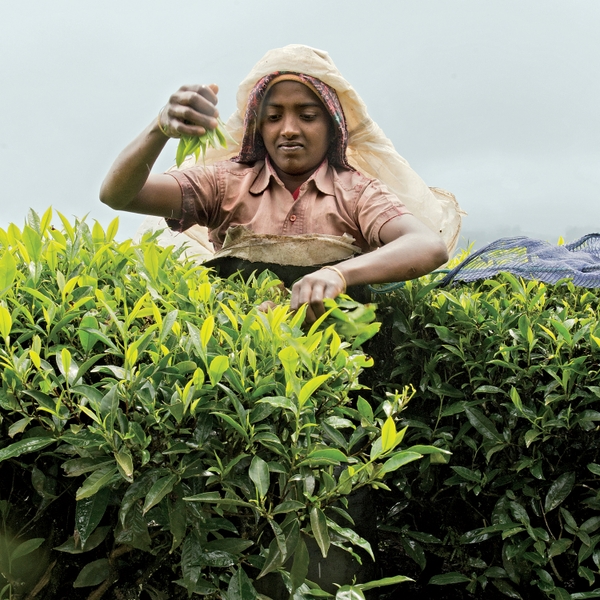Found: Green Heaven, an Indian Oasis. Left Behind: Your Overworked Self.
That's what they call the southern Indian state of Kerala, a laid-back tropical paradise where you can paddle hidden backwaters, trek the rugged Western Ghats, look for tigers, indulge in Ayurvedic treatments, and chill out on unspoiled beaches. Just leave your manic Western self behind.
New perk: Easily find new routes and hidden gems, upcoming running events, and more near you. Your weekly Local Running Newsletter has everything you need to lace up! .
Anything can happen during Onam. Each autumn the residents of Kerala, a lush southern Indian state bordering the Arabian Sea, go all out to celebrate their secular ten-day harvest festival. It commemorates the return of the legendary king Mahabali, who is said to have given every Keralan—whether Hindu, Muslim, Christian, Sikh, Buddhist, Jew, Jain, or other—equal rights and total prosperity. Over the centuries, Mahabali has morphed into an Indian version of Santa Claus, and you’ll find him everywhere—on billboards hawking new cars and in the flesh twirling parasols in parades.
I bumped into Mahabali while attempting to cross the street in the city of Vaikom. I was so preoccupied with buying a sari for the festival that I didn’t notice a parade of hundreds following a bejeweled man with a giant belly and wearing a crown. Being Mahabali, he handed me a piece of candy as he passed, while a TV news reporter stuck a mike in my face and asked: “What do you think of Onam?”
“It’s a happy time!” I stammered, trying to sum up ancient history in a sound bite.
[quote]“Are you going to win the race?” I ask one of the men. “It all depends on God,” he replies, before they paddle off toward the start line in perfect synchronicity.[/quote]
After a few days of exuberance, I can attest that Keralans know how to celebrate. Yesterday, on Lake Vembanad, I feasted on the traditional Onam meal, known as sadya, at an eco-resort called . The 26 vegetarian servings included ash gourd, masala curry, sambar, papadams, mango pickles, and pressed rice flakes with jaggery, a pure form of sugar, which were served on a banana leaf and eaten by hand. This morning I’m on my way to the festival’s last event, the , a 700-year-old, nearly one-mile contest that starts at the Aranmula Temple on the River Pamba. According to legend, Lord Krishna, one of the most venerated of Hinduism’s many deities, designed the boats. The race, in which 120-foot-long palliyodams, or snake boats, from 48 villages go head-to-head in front of thousands of spectators, has the pomp and circumstance of the Olympics and seems a fitting end to the celebration.
On the bank of a stream, there are two snake boats, handcrafted from wild jackwood and with sterns shaped like cobras’ heads, being prepared for the event. The boats are draped with marigolds and filled with racks of bananas to fuel the dozens of shirtless men in each. The men have sandalwood marks on their foreheads and are wearing white loincloths and head scarves; some have already dipped into toddy, a fermented coconut alcohol, and are starting to get a little rowdy.
“Are you going to win the race?” I ask one of the men.
“It all depends on God,” he replies, before they paddle off toward the start line in perfect synchronicity.
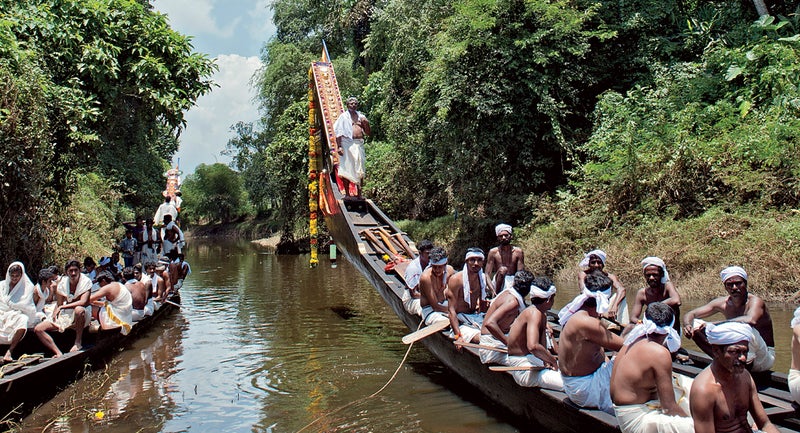
The race is mayhem. One of the boats capsizes, and the revelers let out a collective gasp as the paddlers swim toward the opposite shore. A motorboat packed with costumed men wearing devil masks and impersonating foreign tourists, complete with fake boobs and blond wigs, speeds past. If this raucous festival is an accurate representation of life in the state famously known as God’s Own Country, then, I decide, God must thrive on chaos and like to have fun.
“In Kerala, many things make sense and many things don’t,” says my guide, Rajesh “Raj” Padmanabha Iyer Ramakrishnan, a 36-year-old Hindu priest and yoga instructor. Since the beginning of our 600-mile car and train journey across the state, he’s been chanting the Mahamrityunjaya, a melodic devotion to Lord Shiva, the many-powered creator and destroyer whom Hindus worship as one of the primary forms of God.
“It boils down to a plea for victory over death,” he says of the prayer. Which makes sense—I don’t have a seat belt, so I’m trusting Shiva for safe passage through the rolling countryside of rubber tree and banana plantations, Hindu and Christian shrines, towering coconut palms, and goats, cows, people, and tuk-tuks as we pass a sign that reads SPEED THRILLS, BUT KILLS.
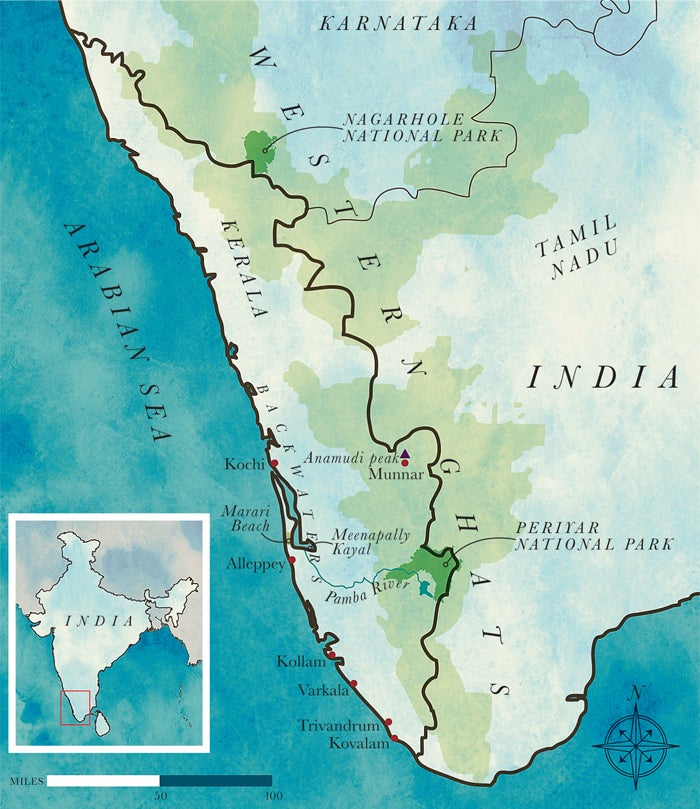
Kerala, one of the smallest states in India, is roughly the size of Maryland and Delaware combined but has a population of 35 million—about the same number of people in the entire country of Canada. Despite the masses, Kerala is intensely beautiful. In the west, 360 miles of palm-fringed, sandy coastline hugs the Arabian Sea. To the east, the mountainous Western Ghats, one of India’s , rise up to the 8,842-foot summit of Anamudi, the highest point in the country outside of the Himalayas. Herds of wild elephants and solitary tigers roam the Ghats through the sprawling , a wildlife corridor that extends into the neighboring states of Tamil Nadu and Karnataka.
Numerous wild rivers flow from the Ghats’ peaks, many of them into the “backwaters,” an interconnected inland waterway of lagoons, canals, and lakes near the Arabian Sea. Plant anything here and it will grow, from coconuts to mangos to ginger, which is why the food is so fresh and healthy. Add forests full of medicinal herbs, spices, and flowers and it’s no wonder Keralans have been practicing the healing art of Ayurveda for centuries. Ayurvedic hospitals and spas treat 90-year-old farmers with arthritis and stressed-out Western execs who fly in on private jets for monthlong treatments.
“Kerala, the green heaven, can not only be a great recuperation place after a big Himalayan trek or expedition, but a destination in itself,” says , a pioneering mountaineer who made the first Indian ascent of 21,162-foot Meru North. In 2008, Soin was the founding president of the , a national body driving the country’s responsible-tourism agenda. He’s also the owner of , the company that arranged my trip.
[quote]Ayurvedic hospitals treat 90-year-old farmers with arthritis and stressed-out Western execs who fly in on private jets for monthlong treatments.[/quote]
“One can easily spend days trekking in the Western Ghats, mountain-biking over the rolling coffee plantations, kayaking in the backwater lagoons, and looking for the tiger on foot,” he told me as we mapped out an itinerary between Kerala’s five national parks, 17 wildlife sanctuaries, hundreds of miles of forest, and endless beaches.
As the epicenter of the world’s spice trade, Kerala has also endured as a largely independent, multicultural society for centuries. It’s a mind-boggling amalgam of cultures and beliefs. “Kerala is perhaps the only place in the world that is able to produce both a practicing Catholic and an agitated Communist,” Jose Dominic, the managing director of , a group of sustainable eco-resorts and properties in southern India, told me.
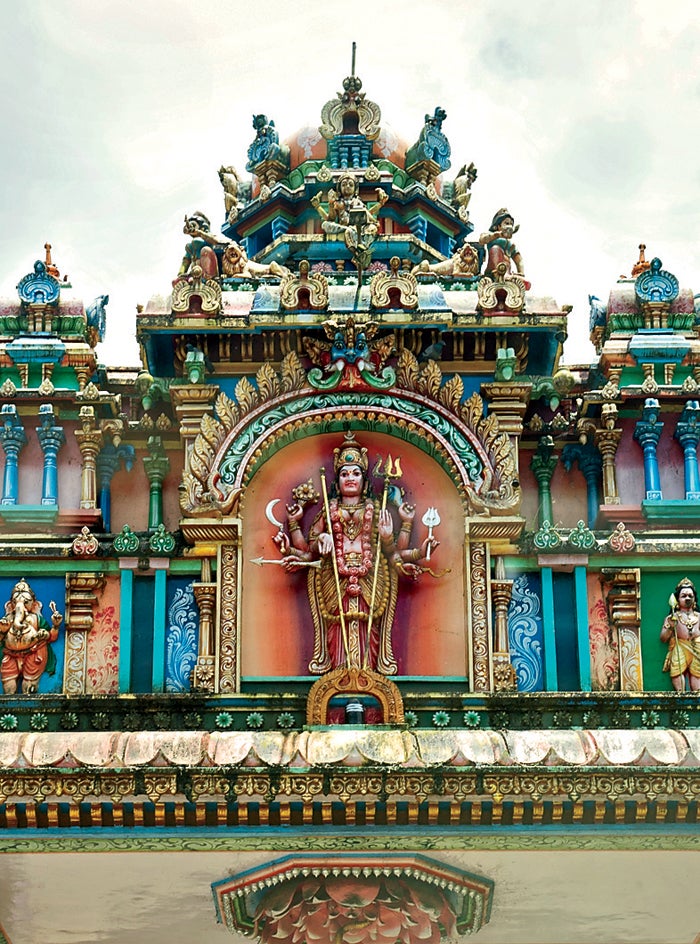
Yes, Kerala has Communists. In 1957, ten years after India gained independence from Britain, the state became the first in the world to democratically elect a Communist government. The Communists successfully pushed through land reform in 1970, making Kerala one of the first states in India to end the feudal system. Drawing on a long history of enlightened Hindu rulers and Christian missionaries, the Communists and successive parties (which continue to trade power in any given election) made it a priority to educate the masses. Today, 93 percent of Kerala’s population is literate, which is perhaps why everyone always seems to be reading one of the state’s 31 Malayalam newspapers. Kerala also has , the in India, and an , seven years higher than the national average. In almost every quality-of-life indicator, Kerala is off the charts.
“Kerala is a breath of fresh air for Mother India,” Dominic said. “It’s much safer than the north, and travelers aren’t as shocked here. The fear of communism kept industrial investors out, and eventually local entrepreneurs navigated through the political minefields. Now small, high-value, and local has become the flavor of Kerala’s growth. Nothing will be permitted here if it is at the cost of the community.”
Which isn’t to say that Kerala is without struggles, including occasional outbursts of violence between feuding political parties, strikes, and one of the highest rates of alcoholism in India. And in a state where there are 2,200 people per square mile, my Western notions of rugged individualism and wide-open spaces may need a little adjusting.
“When you look at this, you can feel destination infinity,” says Raj. We’re just north of , a backwater hub, paddling sit-on-top kayaks on Meenapally Kayal, a wide, beautiful lake and an important link to the numerous channels in the 297-mile backwater ecosystem. It’s also one of the most popular backdrops for Mollywood blockbusters (Malayalam-language movies filmed in Kerala), because of its impressive expanse and uncluttered shoreline ringed with coconut palms.
Known as “the rice bowl of Kerala,” the backwaters are one of the only places in the world outside of Holland where land is cultivated below sea level. Small villages line the canals and are surrounded by a chlorophyll heaven of rice paddies, banana leaves, and gardens of spinach, long beans, and curry. Lavender houses, indigo pet peacocks, women in brightly colored saris, and men in plaid dhotis pop out of the foliage in brilliant relief. This is the land of , who spent part of her childhood in the village of Aymanam, where she set her haunting novel .
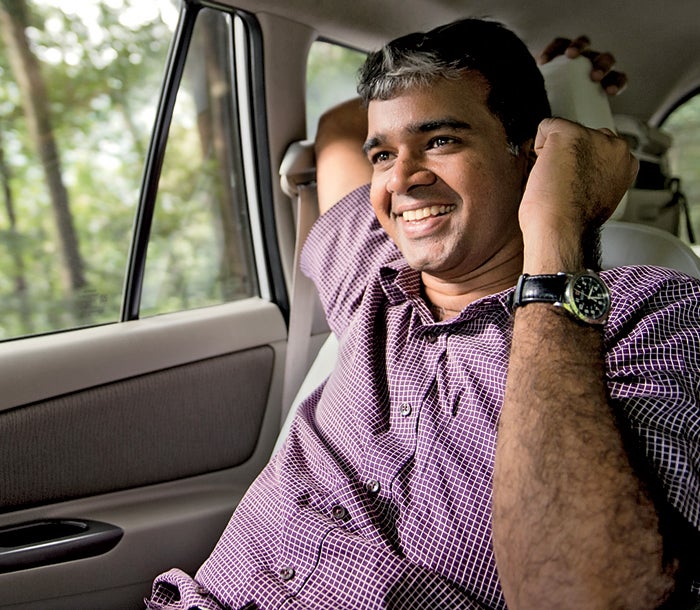
With a shock of white hair, a master’s degree in philosophy and religion, years logged teaching yoga in an ashram, and a serious Facebook addiction, Raj has led dozens of trips through the backwaters, but those have been on kettuvallams, the famous houseboats that were used in the days of the spice trade and are now motorized party barges for tourists. At last count, 800 kettuvallams plied the waterways near Alleppey, and the government is keeping tabs on licensing. Some of the boats are luxurious cruisers outfitted with air-conditioned staterooms. But to reach the remote channels a kayak is required, which is why we’re with Binu Joseph, a 26-year-old local whose mother loaned him her gold to buy six kayaks from New Zealand to start his own motorless tours.
“I see everyone in the houseboats, and they are not experiencing the backwaters,” Binu tells me as we paddle past honking kettuvallams belching diesel fumes. “So I search the Google for a flat boat. When I started the trips, there was only me doing it, but now there are three others.”
Binu grew up near here and knows his way through these labyrinthine waters. We stop along a major canal at an open-air restaurant for a breakfast of appam, which is like a coconut pancake, accompanied by a sambar and some fresh toddy that a “toddy tapper” had just collected from a tree. It’s a little sweet, a little tangy, a lot less sour than I expect, and it goes down smoothly. We hop in the boats and paddle past a Hindu marriage hall and temple and the local Communist Party headquarters before paddling into a smaller canal that will take us deep into peaceful Muslim, Christian, and Hindu neighborhoods, where orchids grow with abandon, kids race our boats in wooden canoes, and kingfishers, egrets, and cormorants dart.
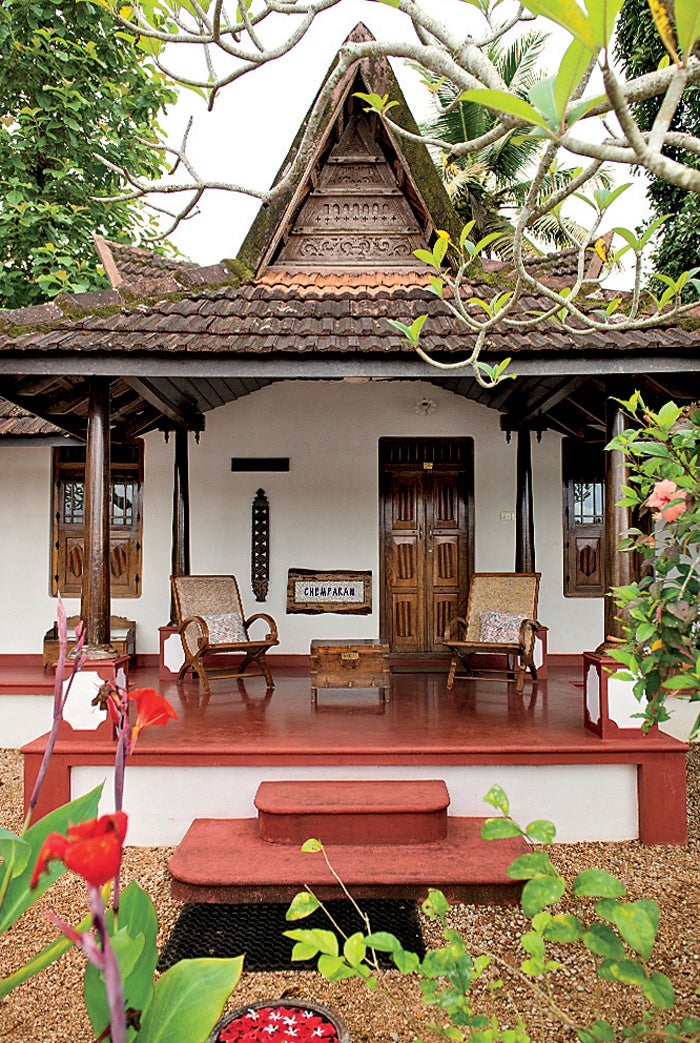
The ubiquitous wooden canoes are like cars, and most everything needed to sustain life can be found along the waterways, including a floating medical clinic, churches, schools, mosques, temples, and supermarkets that sell rice powder, paper, soap, and oil. At one point the small canal, called a thode, is so narrow and choked with water hyacinths that it feels like we’re turning down a path of no return. But after a few hundred yards, the channel widens and spits us back into the lake, where Binu’s driver is waiting for us in his colorfully roofed outboard shikara.
Binu, who has a stocky build, got married a few months ago and has a bachelor’s degree in business from Kerala University. His family has high hopes that he’ll go to law school. He’s preparing for his entrance exams, but, he tells me, “I don’t want to go to the court. I like my life.”
I can see why. I felt the pull of the backwaters a few mornings ago when I awoke, at a family-run inn called , to a driving, predawn monsoon. The crickets, frogs, and roosters chirped, croaked, and crowed the world to life. Minutes later their wild cries were drowned out by the staccato blast of hundreds of firecrackers, a classic Hindu offering, especially popular during the Onam festival. By 6 a.m., a melodious hymn wafted over the water via a loudspeaker at St. Mary’s Church in Kudavechoor, where believers were already celebrating mass and spreading the word.
“Do you see this? It’s Spanish lady, we use it to treat kidney stones,” says Renjith Hadlee, a wiry 28-year-old in an elephant T-shirt and a baseball hat over curly dark hair. “And this is camphor basil. We use it to treat cold and flu. This is an African tulip. The bark is good for treating malaria. This? Wild nutmeg. It tastes good. And this is a poinsettia tree. It’s just pretty,” he says.
To understand how integrated Keralans are with their natural surroundings, take a stroll with one through the forest in the Western Ghats. It’s hard to believe that this steep mountain landscape, with its bald granite peaks, plunging Class V rivers, and cool climate, is in the same state as the backwaters.
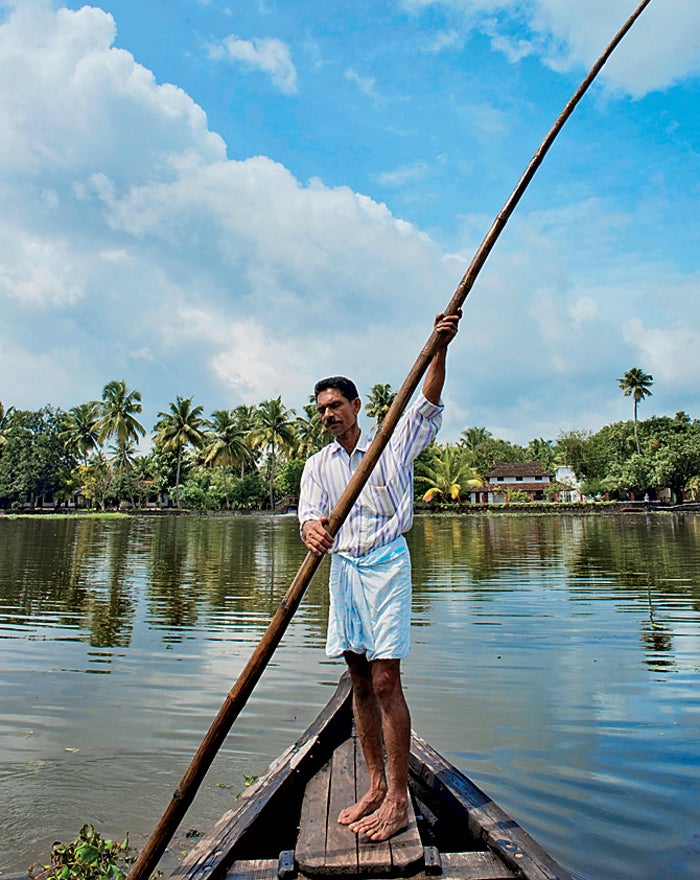
I’m at 5,000 feet near the hill station of Munnar to hike among emerald green tea and cardamom plantations in west-central Kerala. It’s peaceful to be in the quiet abundance of the forest, a welcome reprieve from the honking cars and inquiring eyes of Kerala’s cities. Hadlee, who cofounded a trekking and mountain-biking company called three years ago, is leading me up and down a rock path covered in luminescent green moss through a shola, or tropical mountain forest. More than 1,200 endemic species live among the commercially-planted cardamom, which is an ideal crop at this altitude because it needs little sunlight and requires a lot of moisture. There’s no rain today, but the trees are dripping with a mist that settles in like a shroud. Between the dense fog, the wild pharmaceuticals, and the exotic-bird sightings, it feels like an enchanted forest.
Hadlee’s family has lived in Munnar for five generations, which is why he sees this shola as a medicine chest for Ayurveda, an Indian practice that dates back 5,000 years. I have yet to experience a treatment, but it’s evident that these hills are alive with healing powers.
Over the next few days I visited three more hill stations, including one near , a 357-square-mile tiger and elephant sanctuary that was named the 2012 United Nations Development Programme’s best-conserved biodiversity park in India, and Karnataka’s , in the foothills of the Western Ghats and part of the tristate , which has one of the highest tiger densities in the world. The big cats evaded me at both, which isn’t surprising—they are solitary and nocturnal, and there was too much foliage when I was there in September. But at Nagarhole, I did see a bull elephant, wild peacocks, a herd of gaur, and a crested hawk eagle. If I had opted for the predawn walking safari instead of searching for exotic birds along the shore of Kabini Lake, I would also have seen three leopards sprawling across the limbs of a tree.
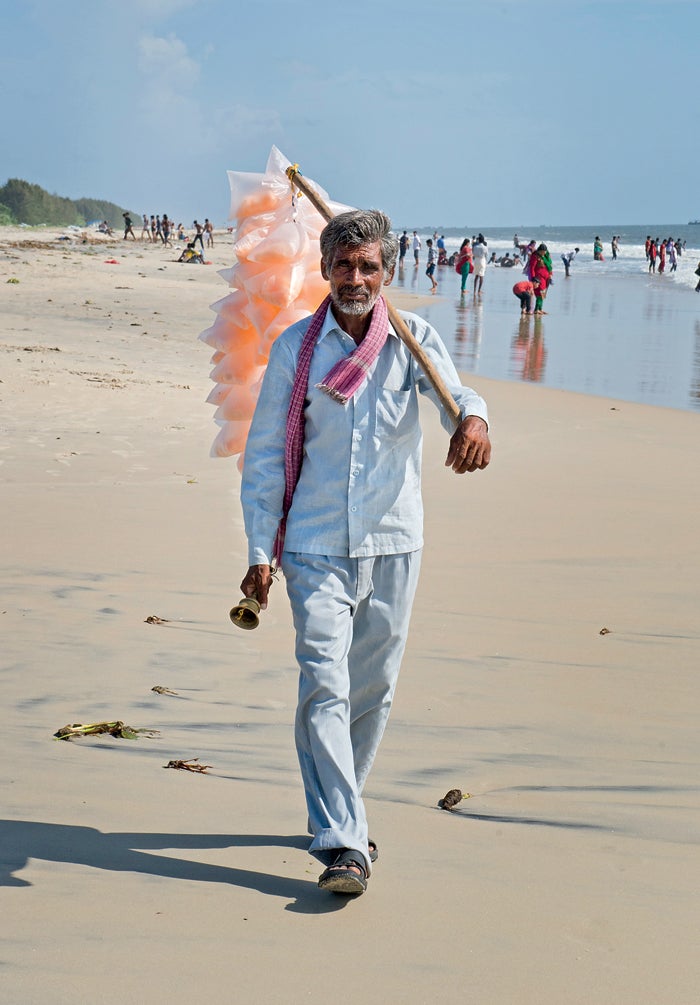
Between stints at the hill stations, we took a short detour to the beach. It’s a stunning coastline but not home to beach life the way you might think of it. With the exception of fishermen, most Keralans seem to have a distant personal relationship with the ocean.
“It is not part of our culture,” a Keralan businessman told me later when I asked why there were so few people on Marari Beach, a long stretch of white sand six miles north of Alleppey. “The ocean means a lot of sun, and we don’t need the tan.”
Even as temperatures were pushing the high eighties, the beach was nearly empty, save for a woman in a black burka chasing a toddler, a few Indian honeymooners, and a dozen fishermen launching a panga into the sea. As much as I wanted to shed my long skirt and long sleeves, seeing the burka reminded me to stay covered in a conservative culture that doesn’t easily tolerate women in bathing suits. Along this part of the coast, the vibe is local and chill, and guests like Paul McCartney come to tuck into thatch-roofed bungalows for yoga and Ayurvedic treatments. Western-style sports like surfing and stand-up paddleboarding are just starting to take root farther south, near the cliff-edged beaches of Varkala and the more developed Kovalam.
No matter where I was in Kerala, it kept occurring to me that most of life here is lived outside. It may not always be in the wide-open spaces and solitude that Westerners so jealously guard as their birthright, but Keralans have an uncanny knack for integrating with their natural surroundings, no matter how chaotic or peaceful those may be. In God’s Own Country, it’s difficult to discern where humanity ends and nature begins.
A few days later, when I returned to the Western Ghats, I made an early-morning appointment with Sony Sumi, the first woman in a long family line of male doctors to practice Ayurveda. She has two offices: one in her house in the city of Thekkady, to treat locals, and one at Spice Village, a mountain retreat and Ayurvedic spa on the edge of Periyar National Park, where we stayed.
“How is your bowel movement?” she asked. “How is your appetite? Your immunity power? Do you like sweet or sour? What kind of dreams do you have?” After the rapid-fire Q&A, Sumi, who was wearing an elegant gold salwar kameez, took my pulse at her desk. Behind us was an ornate copper lamp with a steady burning flame, which, Sumi explained, illuminates the presence of God.
“Before and after the treatments, we pray to God. God resides everywhere. Do you believe in God?” she asked.
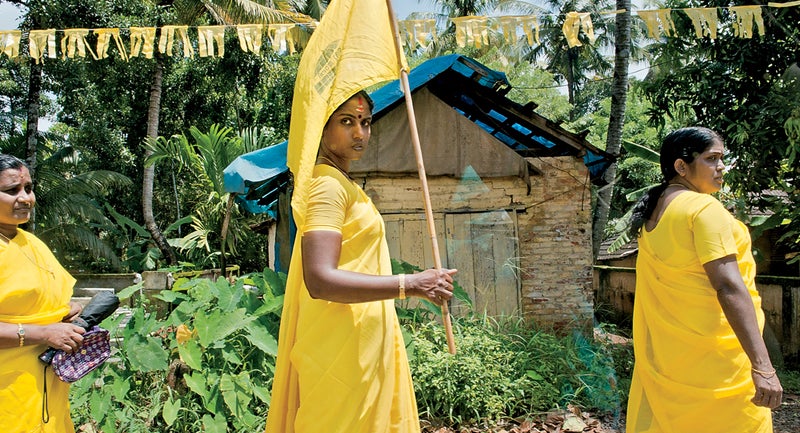
Hindus believe that Ayurveda was handed down from Brahma, the god of creation, to Dhanvantari, the physician of the gods. Simplified, its premise is that we are a mixture of three doshas, or energies. If our doshas are in equilibrium, our body, mind, and spirit are healthy. If our doshas are out of balance, disease, depression, and physical pain set in. To balance the doshas requires a stringent routine of diet, exercise, massage, and meditation, and often less pleasant detoxifiers.
“In modern medicines, they treat the particular symptom,” Sumi told me. “In Ayurveda, we treat the disease from its root. In such an era of stress, pollutants, and climate change, we can treat and eliminate toxins by decoctions and by sweating, enemas, bloodletting, and vomiting.”
A true diagnosis and treatment can take up to three weeks, but I had only a day, so Sumi diagnosed my primary dosha as vata. “Basically, the quality of vata is movement, very fast acting,” she said, which is no surprise to me, considering that I’m a restless wanderer and chronic insomniac. She gave me a long list of foods to eat (like maple syrup and avocado) and to avoid (chocolate and raw garlic) and recommended a sirodhara Ayurvedic treatment. After receiving a blessing from the therapist, followed by a rigorous scalp and body massage, I laid flat on my back on a traditional teak Ayurvedic treatment bed while a clay pot that swung like a metronome a few feet above me dripped sandalwood-infused sacred oil in a straight line across my forehead, directly over the third eye. The steady drip relaxes the nervous system and relieves migraines, insomnia, stress, and fatigue. It put me in such a relaxed trance that I wondered if Shiva himself was reaching down to erase my worry lines.
Guide to Visiting Kerala
If you've never been to India, go with a company that knows the ropes, even in a well-traveled state like Kerala. Here's how to do it right.
Contributing editor Stephanie Pearson wrote about the best island escapes in November 2014.
